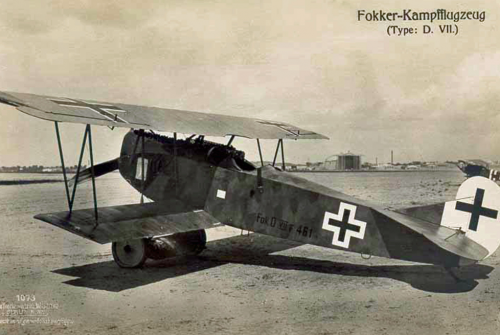Prohibition Against Crime in Brome-Missisquoi Between 1890 and 1899
Starting in the mid 19th century, several religious organizations went on a crusade against alcohol consumption and the ravages it caused in North America. In Canada, the main temperance movements were the Dominion Alliance, the Sons of Temperance and the Woman’s Christian Temperance Union (WCTU). From the Latin word Temperantia which means “moderation, self-control,” Temperance societies, mostly of Protestant denominations, compelled political authorities to ban alcohol by closing down hotels and taverns in border counties. Christopher Dunkin, Deputy of Brome created the first Canadian prohibition law in 1864. This new prohibition act attacked drunkenness, fights and blood-shedding crimes, which were condemned as the great ill of modern society. The problems drunkenness caused affected especially women and children because husbands and fathers were the main consumers of alcohol as they were working on the railways or in lumber camps around the Quebec-Vermont border.
The WCTU spied on clandestine bars called Rum Holes. One of the most daunting among these was The Bucket of Blood, built in the municipality of Abercorn, around 1890. It sold a locally-made potato-based whisky to railway workers of the Canadian Pacific Railways (CPR) deployed between Montreal and Boston. A simple log cabin with shelves filled with bottles and a 12-foot-long bar, The Bucket of Blood was set near the customs office by the border. The establishment had gained its bad reputation because of the many bar brawls and killings that involved it. Case in point, the story of Burton Macy, a zealous member of the temperance movement who wanted to blow up the Bucket with a stick of dynamite. He was found dead on the Boston-Montreal railway track, in 1899.
During this same period, several American’s House establishments were opened in the border town of Abercorn, near Vermont. Its best-known hotels were The Prince of Wales, The Prince Albert, International House and Abercorn House. Here again, the Canadian Dominion Alliance temperance movement monitored these hotels’ alcohol trafficking activities. William Smith, Station Master for the Sutton Junction Railway Station, which belonged to the Canadian Pacific Railway (CPR), decided to intercept alcohol parcels that transited illegally by train to the Quebec border hotel keepers. Being a member of the Dominion Alliance, Smith requisitioned several crates in 1894, for which he received many persistent threatening rumours. One Sunday night, on July 8, in 1894, at the Sutton Junction station, Smith was savagely beaten by an assailant. He was dealt a hard blow to the head and dragged onto the tracks to cover up the crime so it would look like an accident. However, because Smith was in great physical shape and had a resolute nature, he survived. He fought mercilessly with his attacker on the station platform. The killer finally ran off, defeated by his victim’s grit. Although badly wounded with a head trauma, William Smith survived.
The powerful Dominion Alliance of Canada hired Silas Carpenter, a Canadian Secret Agency Service detective from Montreal, to investigate the border murder conspiracy against William Smith. Chief detective Carpenter very quickly understood that smugglers were involved and directed his investigation towards the escape of John Howarth, a hotel owner and Abercorn citizen, James Wilson. An Abercorn woman told Carpenter she had encountered a strange-looking American, who said he was a horse merchant from Boston, and whose travel papers were issued by the city of Marlboro, Massachusetts. Carpenter went to Marlboro and found the man in question; His name was Walter Kelly. With American law officers as witnesses, Carpenter offered Kelly a sentence remission if he would give up the names of his Canadian accomplices. Kelly admitted his involvement in the attack on Smith and gave him the names of his Quebec accomplices, John Howarth and James Wilson, both from Abercorn. The first was found and brought to the Sweetsburg (Cowansville) prison by a Knowlton Constable. James Wilson was found in an isolated cabin, in the heart of the Sutton mountains, in Vermont. Once there, Carpenter was warned by the local customs officers about the dangers that he would be facing in his endeavour. A reporter from the Montreal Daily Star wrote: “The Wilsons were known as a fighting family, who would never allow a member to be arrested easily (…) it seemed perfect folly to them that Detective Carpenter alone, with only a Star reporter, should thus attempt to “beard Lions in their dens” on the very dark night too!» Arriving on the night train from the train station in Vermont, Carpenter arrested James Wilson and overcame his family by threatening them with the disastrous consequences of his escape on them.
In 1898, in the Sweetsburg Courthouse (today Cowansville), the trial for murder against Smith emphasized the financial and political implications brought about by the county alcohol traffickers, especially for the CPR railway, questioned by the Dominion Alliance who claimed the company had closed its eyes in matters of alcohol contraband.
Sadly, following his testimony and his homicide complaint, William Smith lost his position as station manager for his “too public action” according to the Canadian Pacific Railway. Given this great public injustice, the book The Story of a Dark Plot or Tyranny on the Frontier was published in 1902, in Boston. It denounces this dark heinous crime and the political conspiracy linked to alcohol in Brome-Missisquoi.




0 comments